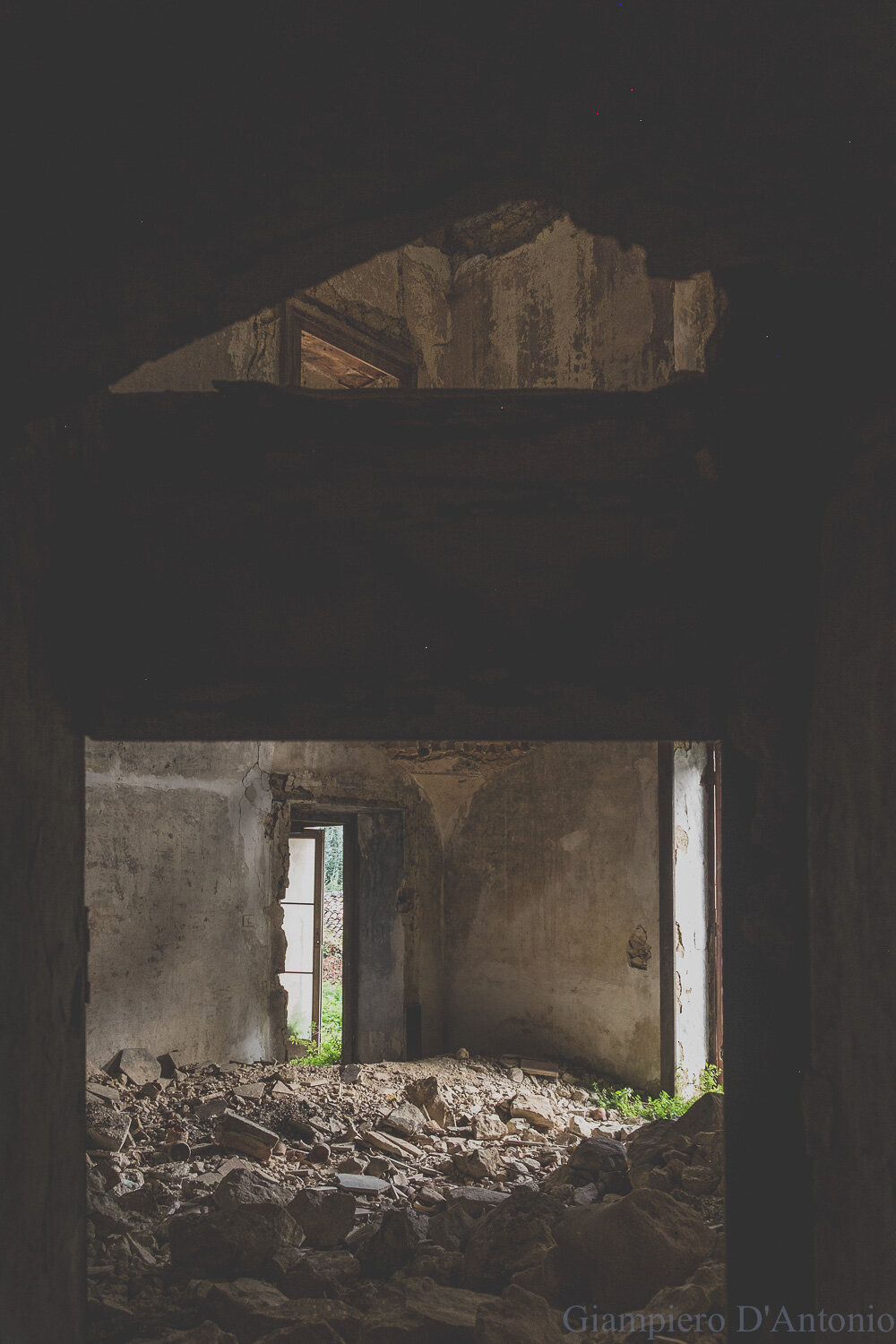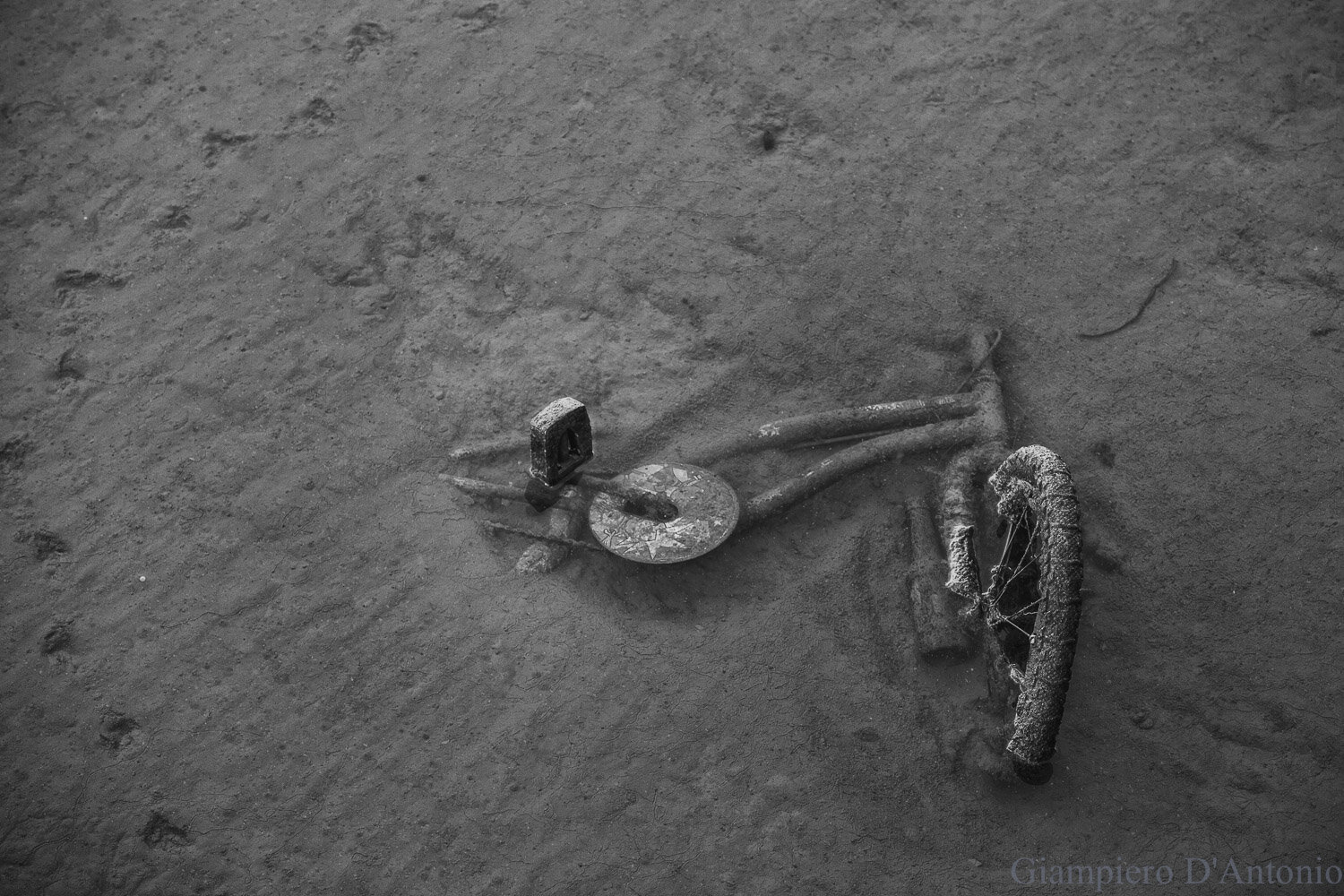This is the sad little story, like so many scattered throughout the Italian territory, of a slow and inexorable decline of a noble palace and of the people who lived there, taken as an example to bring to the attention of the reader, a much wider phenomenon and which, as mentioned, involves our historical heritage throughout the Italian territory.
This palace was built in the seventeenth century by the noble local family, in whose hands it will remain until the early years of the new millennium.
Over the centuries, there have been numerous renovations, due to external events such as earthquakes, Unfortunately, arriving at the present days, in conjunction with the decline of the family, in recent decades, the building has suffered serious and irreparable damages, mainly due to neglect, which inevitably marked its fate.
The house is fully shored up, to avoid structural collapses, and today it is totally unusable. Completely emptied of any element of value, left to collapse in general indifference, today his sheltering pigeons and cats who have found the comfort of a house among its noble rubble.
As anticipated in the first line, this is a fairly common photo story in Italy, where, growing abandonment and wild overbuilding, they leave our territory with hundreds of thousands of forgotten buildings. The numbers are frightening, and trace the profile of a nation that is slowly crumbling, about 6% of all Italian real estate assets are on the way to becoming ruined, a percentage that continues to grow year after year.
Only for statistical purposes, here are some data: About 50,000 buildings are now in a state of neglect, including noble palaces, villas and castles . Approximately 20,000 between ecclesiastical buildings, churches, abbeys and convents in disuse.
The rediscovery of these places, excluding the romanticism of memories, hides a serious social problem: the erosion of the territory. Suffice it to say that it is estimated that over 10,000 square km of territory already occupied by abandoned buildings, in addition to a constant and increasing overbuilding, only in 2018, about 2 square meters per second were cemented, the equivalent of 15 football fields a day.
Today We let concrete devour the territory, the overdevelopment of suburban urban areas, the countless building abuses in protected and at-risk areas, new and useless commercial areas, forgetting the numerous abandoned places that could be redeveloped.
But to us all this seems to leave us indifferent, continuing to build and abandon, following the consumerist logic that has long governed our lifestyles and that will soon lead us to the dissolution of our natural and historical beauties.










































